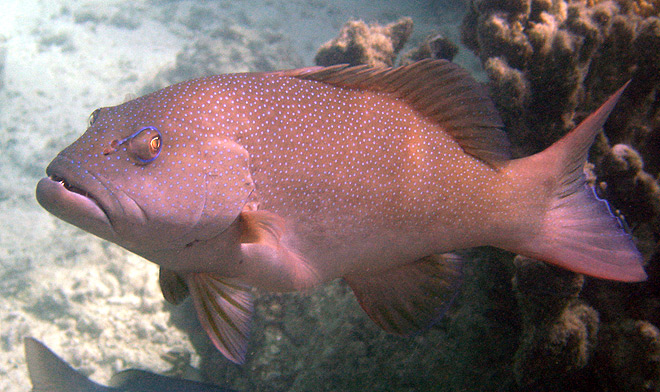Also known as the Leopard Coral Grouper, the Coral Trout could be considered somewhat of a lush, as it will rarely move outside of a 500 metre area, while it has a particular penchant for prawns. Who can blame them? After all, many of us like to sit at home on our couch eating our favourite food.

Found throughout the world, including various parts of the western Pacific, the Coral Trout can often be seen in and around the waters of the Great Barrier Reef, where they’re snacking on prawns, crustaceans and fish.
Here they display two distinct methods of hunting – ambush and prowling – which they do during daylight hours (most often at dusk and dawn). Interestingly, they also change their skin colour when feeding.
With the ambush technique, this prawn lover will hide, remaining quiet and still before attacking passing prey. With the prowling technique, the fish will creep toward their target before suddenly attacking at great speed.
The greatest growth period for this crafty fish is in the first three years of its life. After this point its slows until it finally reaches about 60 cm in length. The Coral Trout is also known to live up to the ripe old age of 18 years, and can weigh up to 26 kg.
It also has a relatively high spawning frequency and annual fertility rate, which ensures its numbers remain abundant and stable, even in the face of commercial fishing. Furthermore, the trout are protogynous hermaphrodytes, as they all start as females and may change their sex later in life. Research has indicated the rate and timing of this sex change differs in different areas of the Great Barrier Reef.
In courtship, the males attempt to entice females into their territories through elaborate physical displays. Here males display the darkened edges of their fins, which can be turned on and off almost instantly. The male will also quiver and shake his head from side to side.
